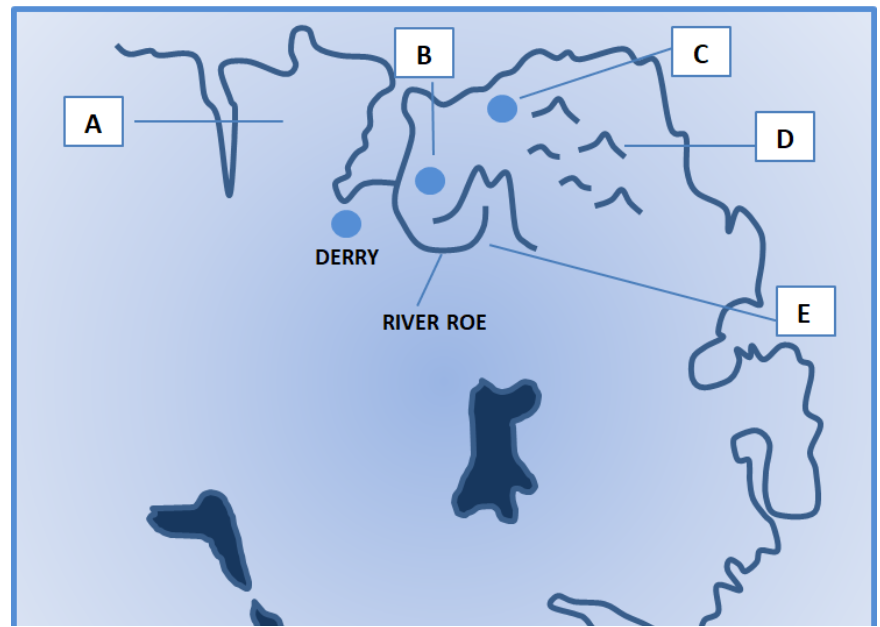Biology of Bitterness
A. There is a reason why grapefruit juice is served in little glasses: most people don’t want to drink more than a few ounces at a time. aringin, a natural chemical compound found in grapefruit, tastes bitter. Some people like that bitterness in small doses and believe it enhances the general flavor, but others would rather avoid it altogether. So juice packagers often select grapefruit with low naringin though the compound has antioxidant properties that some nutritionists contend may help prevent cancer and arteriosclerosis.
B. It is possible, however, to get the goodness of grapefruit juice without the bitter taste. I found that out by participating in a test conducted at the Linguagen Corporation, a biotechnology company in Cranbury, New Jersey. Sets of two miniature white paper cups, labeled 304and 305, were placed before five people seated around a conference table. Each of us drank from one cup and then the other, cleansing our palates between tastes with water and a soda cracker. Even the smallest sip of 304 had grapefruit ‘s unmistakable bitter bite. But 305 was smoother; there was the sour taste of citrus but none of the bitterness of naringin. This juice had been treated with adenosine monophosphate, or AMP, a compound that blocks the bitterness in foods without making them less nutritious.
C. Taste research is a booming business these days, with scientists delving into all five basics-sweet, bitter, sour, salty, and umami, the savory taste of protein. Bitterness is of special interest to industry because of its untapped potential in food. There are thousands of bitter -tasting compounds in nature. They defend plants by warning animals away and protect animals by letting them know when a plant may be poisonous. But the system isn’t foolproof. Grapefruit and cruciferous vegetable like Brussels sprouts and kale are nutritious despite-and sometimes because of-their bitter-tasting components. Over time, many people have learned to love them, at least in small doses. “Humans are the only species that enjoys bitter taste,” says Charles Zuker, a neuroscientist at the University of California School of Medicine at San Diego. “Every other species is averse to bitter because it means bad news. But we have learned to enjoy it. We drink coffee, which is bitter, and quinine [in tonic water] too. We enjoy having that spice in our lives.” Because bitterness can be pleasing in small quantities but repellent when intense, bitter blockers like AMP could make a whole range of foods, drinks, and medicines more palatable-and therefore more profitable.
D. People have varying capacities for tasting bitterness, and the differences appear to be genetic. About 75 percent of people are sensitive to the taste of the bitter compounds phenylthiocarbamide and 6-n-propylthiouracil. and 25 percent are insensitive. Those who are sensitive to phenylthiocarbamide seem to be less likely than others to eat cruciferous vegetables, according to Stephen Wooding, a geneticist at the University of Utah. Some people, known as supertasters, are especially sensitive to 6-n-propylthiouraci because they have an unusually high number of taste buds. Supertasters tend to shun all kinds of bitter-tasting things, including vegetable, coffee, and dark chocolate. Perhaps as a result, they tend to be thin. They’re also less fond of alcoholic drinks, which are often slightly bitter. Dewar’s scotch, for instance, tastes somewhat sweet to most people. ” But a supertaster tastes no sweetness at all, only bitterness,” says Valerie Duffy, an associate professor of dietetics at the University of Connecticut at Storrs.
E. In one recent study, Duffy found that supertasters consume alcoholic beverages, on average, only two to three times a week, compared with five or six times for the average nontasters. Each taste bud, which looks like an onion, consists of 50 to 100 elongated cells running from the top of the bud to the bottom. At the top is a little clump of receptors that capture the taste molecules, known as tastants, in food and drink. The receptors function much like those for sight and smell. Once a bitter signal has been received, it is relayed via proteins known as G proteins. The G protein involved in the perception of bitterness, sweetness, and umami was identified in the early 1990s by Linguagen’s founder, Robert Margolskee, at Mount Sinai School of Medicine in New York City. Known as gustducin, the protein triggers a cascade of chemical reactions that lead to changes in ion concentrations within the cell. Ultimately, this delivers a signal to the brain that registers as bitter. “The signaling system is like a bucket brigade,” Margolskee says. “It goes from the G protein to other proteins.”
F. In 2000 Zuker and others found some 30 different kinds of genes that code for bitter-taste receptors. “We knew the number would have to be large because there is such a large universe of bitter tastants,” Zuker says. Yet no matter which tastant enters the mouth or which receptor it attaches to, bitter always tastes the same to us. The only variation derives from its intensity and the ways in which it can be flavored by the sense of smell. “Taste cells are like a light switch,” Zuker says. “They are either on or off.”
G. Once they figured put the taste mechanism, scientists began to think of ways to interfere with it. They tried AMP, an organic compound found in breast milk and other substances, which is created as cells break down food. Amp has no bitterness of its own, but when put it in foods, Margolskee and his colleagues discovered, it attaches to bitter-taste receptors. As effective as it is, AMP may not be able to dampen every type pf bitter taste, because it probably doesn’t attach to all 30 bitter-taste receptors. So Linguagen has scaled up the hunt for other bitter blockers with a technology called high-throughput screening. Researchers start by coaxing cells in culture to activate bitter-taste receptors. Then candidate substances, culled from chemical compound libraries, are dropped onto the receptors, and scientists look for evidence of a reaction.
H. Tin time, some taste researchers believe, compounds like AMP will help make processed foods less unhealthy. Consider, for example, that a single cup of Campbell’s chicken noodle soup contains 850 milligrams of sodium chloride, or table salt-more than a third of the recommended daily allowance. The salt masks the bitterness created by the high temperatures used in the canning process, which cause sugars and amino acids to react. Part of the salt could be replaced by another salt, potassium chloride, which tends to be scarce in some people’s diets. Potassium chloride has a bitter aftertaste, but that could be eliminated with a dose of AMP. Bitter blockers could also be used in place of cherry or grape flavoring to take the harshness out of children’s cough syrup, and they could dampen the bitterness of antihistamines, antibiotics, certain HIV drugs, and other medications.
I. A number of foodmakers have already begun to experiment with AMP in their products, and other bitter blockers are being developed by rival firms such as Senomyx in La Jolla, California. In a few years, perhaps, after food companies have taken the bitterness from canned soup and TV dinners, they can set their sights on something more useful: a bitter blocker in a bottle that any of us can sprinkle on our brussels sprouts or stir into our grapefruit juice.
Questions 1-8
The reading Passage has seven paragraphs A-I. Which paragraph contains the following information? Write the correct letter A-I, in boxes 1-8 on your answer sheet.
1. Experiment on bitterness conducted
2. Look into the future application
3. Bitterness means different information for human and animals
4. Spread process of bitterness inside of body
5. How AMP blocks bitterness
6. Some bitterness blocker may help lower unhealthy impact
7. Bitterness introduced from a fruit
8. Genetic feature determines sensitivity
Question 9-12
Complete the following summary of the paragraphs of Reading Passage, using NO MORE THAN TWO WORDS from the Reading Passage for each answer.
The reason why grapefruit tastes bitter is because a substance called (9) …………….. contained in it. However, bitterness plays a significant role for plants. It gives a signal that certain plant is (10) …………….. For human beings, different person carries various genetic abilities of tasting bitterness. According to a scientist at the University of Utah, (11) ……………… have exceptionally plenty of (12) ………………… which allows them to perceive bitter compounds.
Questions 13-14
Choose the correct letter, A, B, C or D.
13. What is the main feature of AMP according to this passage?
A offset bitter flavour in food
B only exist in 304 cup
C tastes like citrus
D chemical reaction when meets biscuit
14. What is the main function of G protein?
A collecting taste molecule
B identifying different flavors elements
C resolving large molecules
D transmitting bitter signals to the brain
The Dinosaurs Footprints and Extinction
A EVERYBODY knows that the dinosaurs were killed by an asteroid. Something big hit the earth 65 million years ago and, when the dust had fallen, so had the great reptiles. There is thus a nice if ironic, symmetry in the idea that a similar impact brought about the dinosaurs’ rise. That is the thesis proposed by Paul Olsen, of Columbia University, and his colleagues in this week’s Science.
B Dinosaurs first appeared in the fossil record 230m years ago, during the Triassic period. But they were mostly small, and they shared the earth with lots of other sorts of reptile. It was in the subsequent Jurassic, which began 202 million years ago, that they overran the planet and turned into the monsters depicted in the book and movie “Jurassic Park”. (Actually, though, the dinosaurs that appeared on screen were from the still more recent Cretaceous period.) Dr Olsen and his colleagues are not the first to suggest that the dinosaurs inherited the earth as the result of an asteroid strike. But they are the first to show that the takeover did, indeed, happen in a geological eyeblink.
C Dinosaur skeletons are rare. Dinosaur footprints are, however, surprisingly abundant. And the sizes of the prints are as good an indication of the sizes of the beasts as are the skeletons themselves. Dr Olsen and his colleagues, therefore, concentrated on prints, not bones.
D The prints in question were made in eastern North America, a part of the world the full of rift valleys to those in East Africa today. Like the modern African rift valleys, the Triassic/Jurassic American ones contained lakes, and these lakes grew and shrank at regular intervals because of climatic changes caused by periodic shifts in the earth’s orbit. (A similar phenomenon is responsible for modern ice ages.) That regularity, combined with reversals in the earth’s magnetic field, which are detectable in the tiny fields of certain magnetic minerals, means that rocks from this place and period can be dated to within a few thousand years. As a bonus, squishy lake-edge sediments are just the things for recording the tracks of passing animals. By dividing the labour between themselves, the ten authors of the paper were able to study such tracks at 80 sites.
E The researchers looked at 18 so-called ichnotaxa. These are recognizable types of the footprint that cannot be matched precisely with the species of animal that left them. But they can be matched with a general sort of animal, and thus act as an indicator of the fate of that group, even when there are no bones to tell the story. Five of the ichnotaxa disappear before the end of the Triassic, and four march confidently across the boundary into the Jurassic. Six, however, vanish at the boundary, or only just splutter across it; and there appear from nowhere, almost as soon as the Jurassic begins.
F That boundary itself is suggestive. The first geological indication of the impact that killed the dinosaurs was an unusually high level of iridium in rocks at the end of the Cretaceous when the beasts disappear from the fossil record. Iridium is normally rare at the earth’s surface, but it is more abundant in meteorites. When people began to believe the impact theory, they started looking for other Cretaceous-and anomalies. One that turned up was a surprising abundance of fern spores in rocks just above the boundary layer – a phenomenon known as a “fern spike”.
G That matched the theory nicely. Many modern ferns are opportunists. They cannot compete against plants with leaves, but if a piece of land is cleared by, say, a volcanic eruption, they are often the first things to set up shop there. An asteroid strike would have scoured much of the earth of its vegetable cover, and provided a paradise for ferns. A fern spike in the rocks is thus a good indication that something terrible has happened.
H Both an iridium anomaly and a fern spike appear in rocks at the end of the Triassic, too. That accounts for the disappearing ichnotaxa: the creatures that made them did not survive the holocaust. The surprise is how rapidly the new ichnotaxa appear.
I Dr Olsen and his colleagues suggest that the explanation for this rapid increase in size may be a phenomenon called ecological release. This is seen today when reptiles (which, in modern times, tend to be small creatures) reach islands where they face no competitors. The most spectacular example is on the Indonesian island of Komodo, where local lizards have grown so large that they are often referred to as dragons. The dinosaurs, in other words, could flourish only when the competition had been knocked out.
J That leaves the question of where the impact happened. No large hole in the earth’s crust seems to be 202m years old. It may, of course, have been overlooked. Old craters are eroded and buried, and not always easy to find. Alternatively, it may have vanished. Although the continental crust is more or less permanent, the ocean floor is constantly recycled by the tectonic processes that bring about continental drift. There is no ocean floor left that is more than 200m years old, so a crater that formed in the ocean would have been swallowed up by now.
K There is a third possibility, however. This is that the crater is known, but has been misdated. The Manicouagan “structure”, a crater in Quebec, is thought to be 214m years old. It is huge – some 100km across – and seems to be the largest of between three and five craters that formed within a few hours of each other as the lumps of a disintegrated comet hit the earth one by one.
Questions 15-20
Do the following statements agree with the information given in Reading Passage? In boxes 15-20 on your answer sheet, write
YES if the statement agrees with the views of the writer
NO if the statement contradicts the views of the writer
NOT GIVEN if it is impossible to say what the writer thinks about this
15. Dr Paul Olsen and his colleagues believe that asteroid knock may also lead to dinosaurs’ boom.
16. Books and movie like Jurassic Park often exaggerate the size of the dinosaurs.
17. Dinosaur footprints are more adequate than dinosaur skeletons.
18. The prints were chosen by Dr Olsen to study because they are more detectable than the earth magnetic field to track the date of geological precise within thousands of years.
19. Ichnotaxa showed that footprints of dinosaurs offer exact information of the trace left by an individual species.
20. We can find more Iridium in the earth’s surface than in meteorites.
Questions 21-27
Complete the following summary of the paragraphs of Reading Passage. Using NO MORE THAN TWO WORDS from the Reading Passage for each answer.
Dr Olsen and his colleagues applied a phenomenon named (21) …………….. to explain the large size of the Eubrontes, which is a similar case to that nowadays reptiles invade a place where there are no (22) ………………….. for example, on an island called Komodo, indigenous huge lizards grow so big that people even regarding them as (23) …………………. However, there were no old impact trace being found? The answer may be that we have (24) ………………….. the evidence. Old craters are difficult to spot or it probably (25) …………………. Due to the effect of the earth moving. Even a crater formed in Ocean had been (26) …………………. under the impact of crust movement. Besides, the third hypothesis is that the potential evidence – some craters maybe (27) ………………..
A leap into history
A. Between the Inishowen peninsula, north west of Derry, and the Glens of Antrim, in the east beyond the Sperrin Mountains, is found some of Western Europe’s most captivating and alluring landscape.
B. The Roe Valley Park, some 15 miles east of Derry is a prime example. The Park, like so many Celtic places, is steeped in history and legend. As the Roc trickles down through heather bogs in the Sperrin Mountains to the South, it is a river by the time it cuts through what was once called the ‘garden of the soul’ – in Celtic ‘Gortenanima’.
C. The castle of O’Cahan once stood here and a number of houses which made up the town of Limavady. The town takes its name from the legend of a dog leaping into the river Roe carrying a message, or perhaps chasing a stag. This is a wonderful place, where the water traces its way through rock and woodland; at times, lingering in brooding pools of dark cool water under the shade of summer trees, and, at others, forming weirs and leads for water mills now long gone.
D. The Roe, like all rivers, is witness to history and change. To Mullagh Hill, on the west bank of the River Roe just outside the present day town of Limavady, St Columba came in 575 AD for the Convention of Drumceatt. The world is probably unaware that it knows something of Limavady; but the town is, in fact, renowned for Jane Ross’s song Danny Roy, written to a tune once played by a tramp in the street. Limavady tow n itself and many of the surrounding villages have Celtic roots but no one knows for sure just how old the original settlement of Limavady is.
E. Some 30 miles along the coast road from Limavady, one comes upon the forlorn, but imposing ruin of Dunluce Castle, which stands on a soft basalt outcrop, in defiance of the turbulent Atlantic lashing it on all sides. The jagged-toothed ruins sit proud on their rock top commanding the coastline to east and west. The only connection to the mainland is by a narrow bridge. Until the kitchen court fell into the sea in 1639 killing several servants, the castle was fully inhabited. In the next hundred years or so, the structure gradually fell into its present dramatic state of disrepair, stripped of its roofs by wind and weather and robbed by man of its caned stonework. Ruined and forlorn its aspect maybe yet, in the haunting Celtic twilight of the long summer evenings, it is redolent of another age, another dream.
F. A mile or so to the east of the castle lies Port na Spaniagh, where the Neapolitan Galleas, Girona, from the Spanish Armada went down one dark October night in 1588 on its way to Scotland, of the 1500-odd men on board, nine survived.
G. Even further to the east, is the Giant’s Causeway stunning coastline with strangely symmetrical columns of dark basalt – a beautiful geological wonder. Someone once said of the Causeway that it was worth seeing, but not worth going to see. That was in thê days of horses and carriages, when travelling was difficult. But it is certainly well worth a visit. The last lingering moments of the twilight hours are the best lime to savour the full power of the coastline s magic; the time when the place comes into its own. The tourists are gone and if you are very lucky you will be alone. A fine circular walk will take you down to the Grand Causeway, past amphitheatres of stone columns and formations. It is not frightening, but there is a power in the place – tangible, yet inexplicable. The blackness of some nights conjure up feelings of eeriness and unease. The visitor realises his place in the scheme of the magnificent spectacle. Once experienced, it is impossible to forget the grandeur of the landscape.
H. Beyond the Causeway, connecting the mainland with an outcrop of rock jutting out of the turbulent Atlantic, is the Carrick-a-Rede Rope Bridge, when first constructed, the bridge was a simple rope handrail with widely spaced slats which was used mainly by salmon fishermen needing to travel from the island to the mainland. In time, the single handrail was replaced with a more sturdy caged bridge, however, it is still not a crossing for the faint- hearted. The Bridge swings above a chasm of rushing, foaming water that seems to drag the unwary- down, and away. Many visitors who make the walk one way are unable to return resulting in them being taken off the island by boat.
Questions 28-32
Looking at the following list of places (Questions 28–32) from the paragraphs A-E of reading passage 3 and their locations on the map. Match each place with its location on the map.

Write your answers m boxes 28-32 on your answer sheet.
28. The Sperrin Mountains
29. Dunluce Castle
30. Inishowen
31. The Glens of Antrim
32. Limavady
Questions 33-38
Do the following statements reflect the claims of the writer in Reading Passage? In boxes 33-38 on your answer sheet write
YES if the statement agrees with the views of the writer
NO if the statement contradicts the views of the writer
NOT GIVEN if it is impossible to say what the writer thinks about this
33. After 1639, the castle of Dunluce was not completely uninhabited.
34. For the author, Dunluce Castle evokes another period of history.
35. There were more than 1500 men on die Girona when it went down.
36. The writer believes that the Giant’s Causeway is worth going to visit.
37. The author recommends twilight as the best time to visit the Giant’s Causeway.
38. The more study cage added to the Carrick-a-Rede Rope Bridge has helped to increase the number of visitors to the area.
Questions 39-40
Choose the correct letter, A, B, C or D.
39. The writer feels that the Giant’s Causeway is
A an unsettling place.
B a relaxing place.
C a boring place.
D an exciting place.
40. Which of the following would be a good title for the passage?
A The Roe Valley Park.
B The Giant’s Causeway.
C Going East to West.
D A leap into history.








